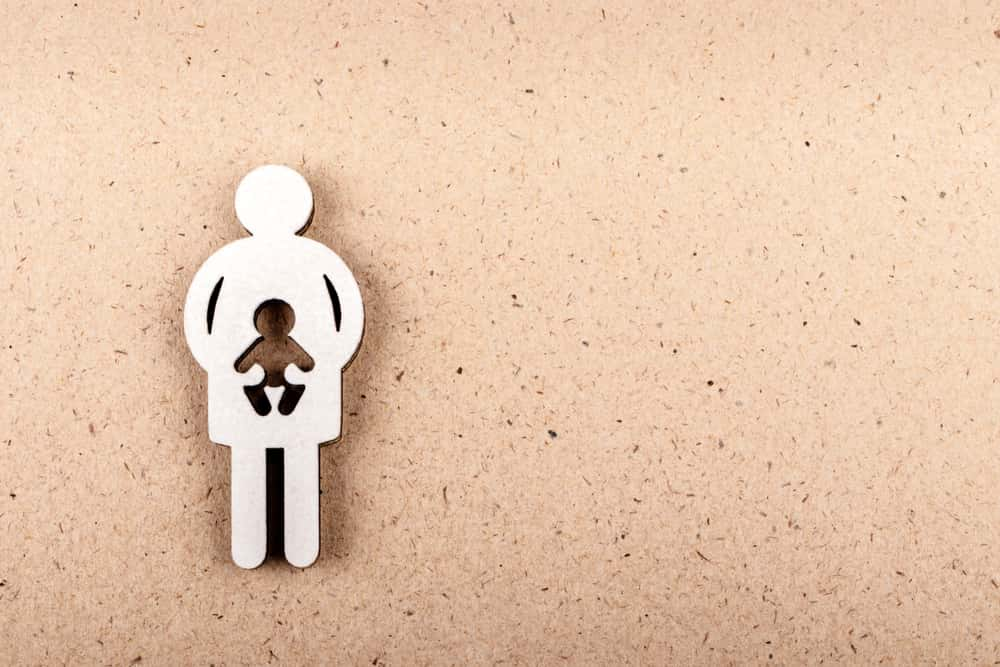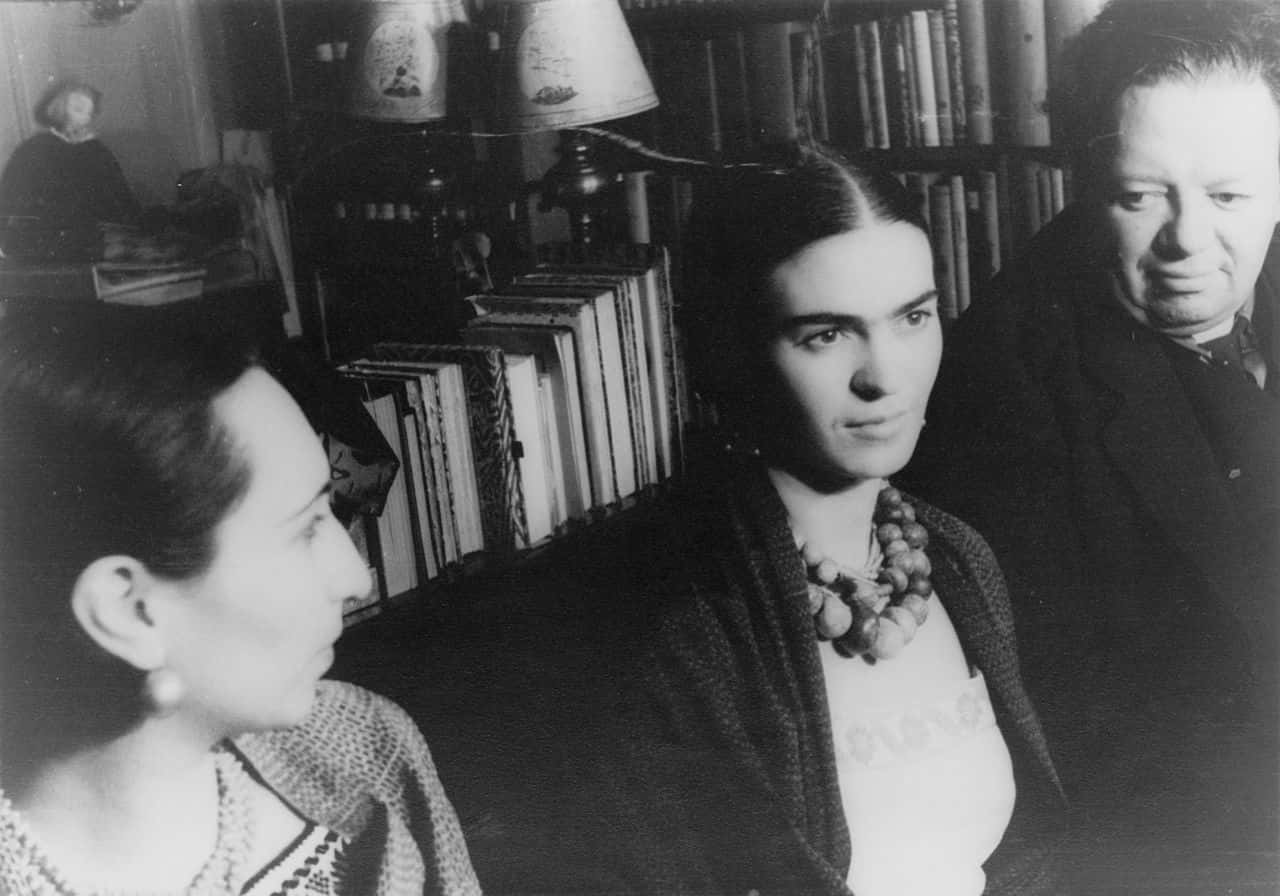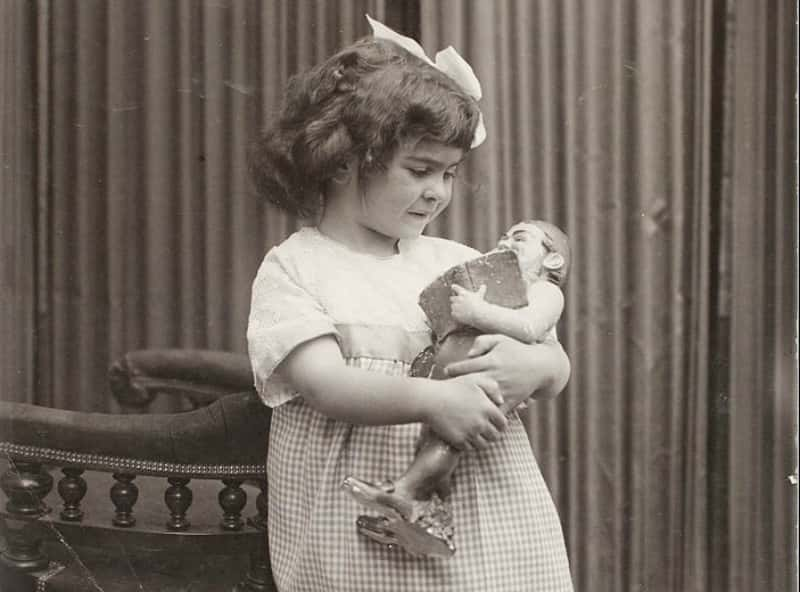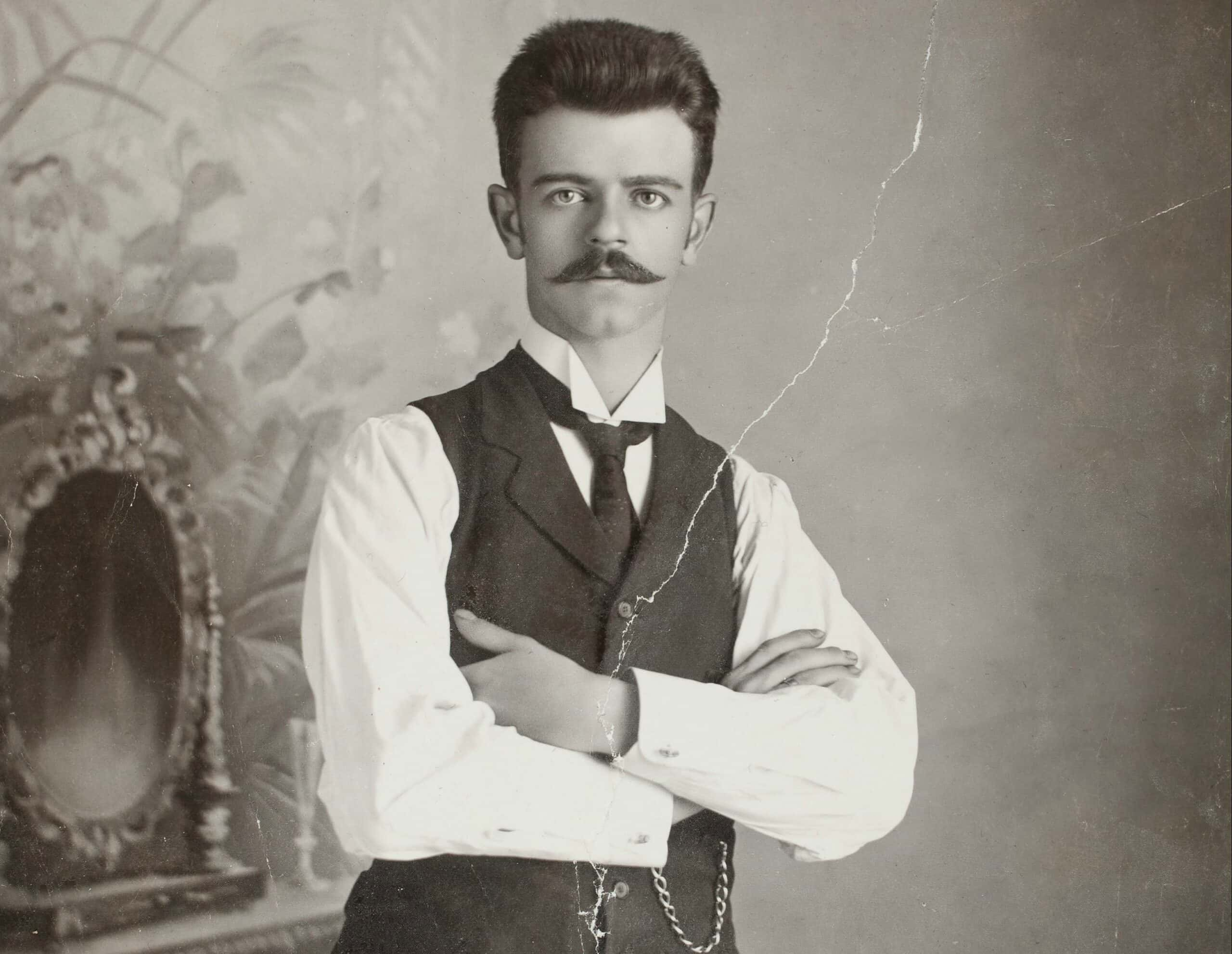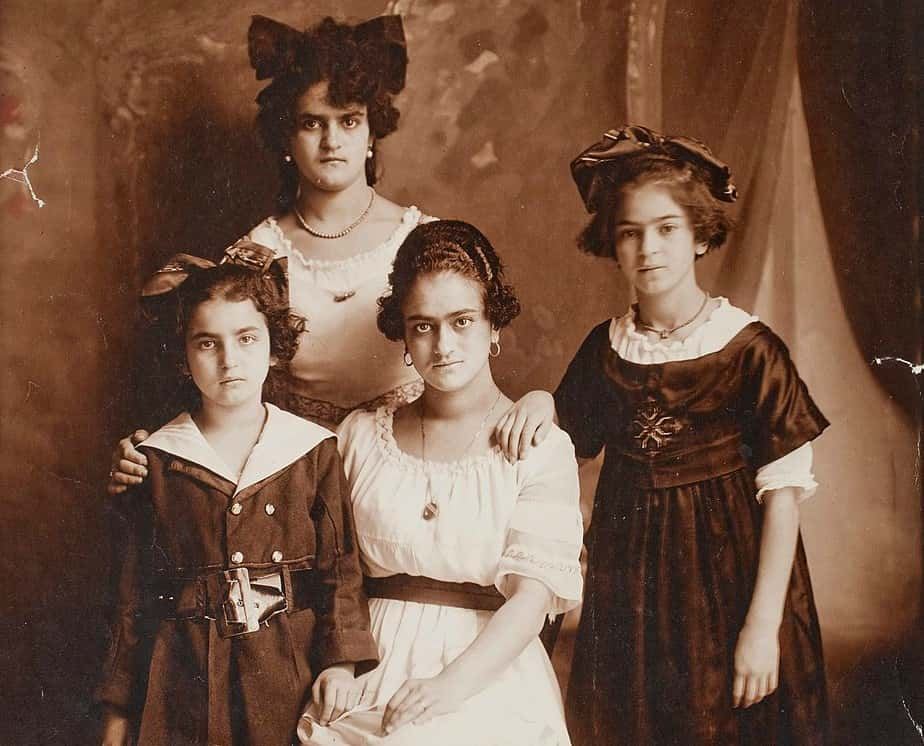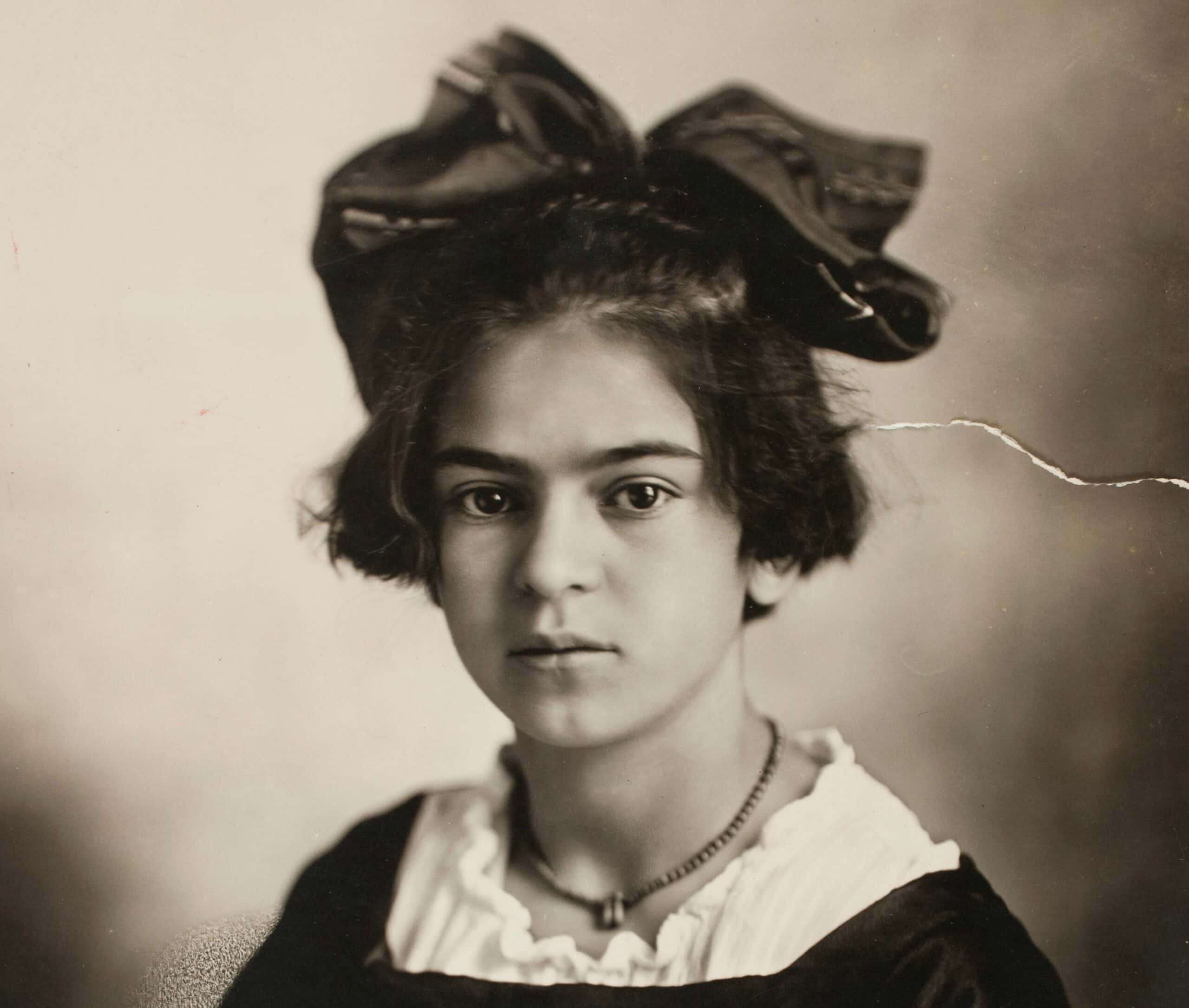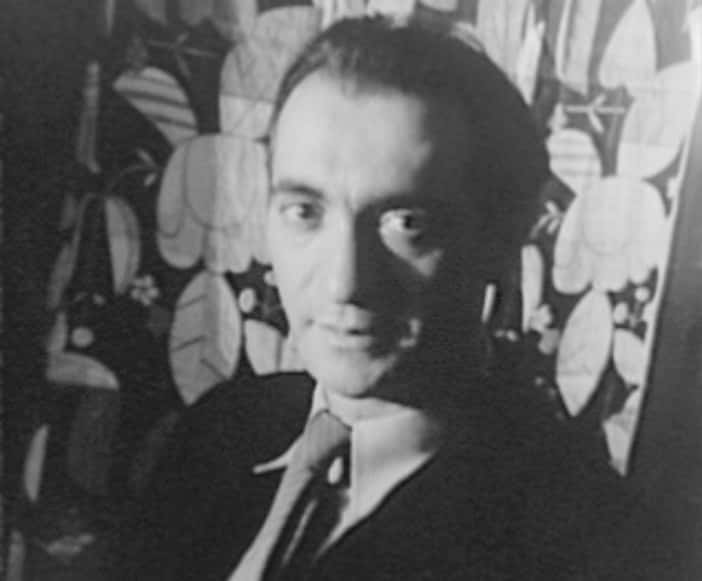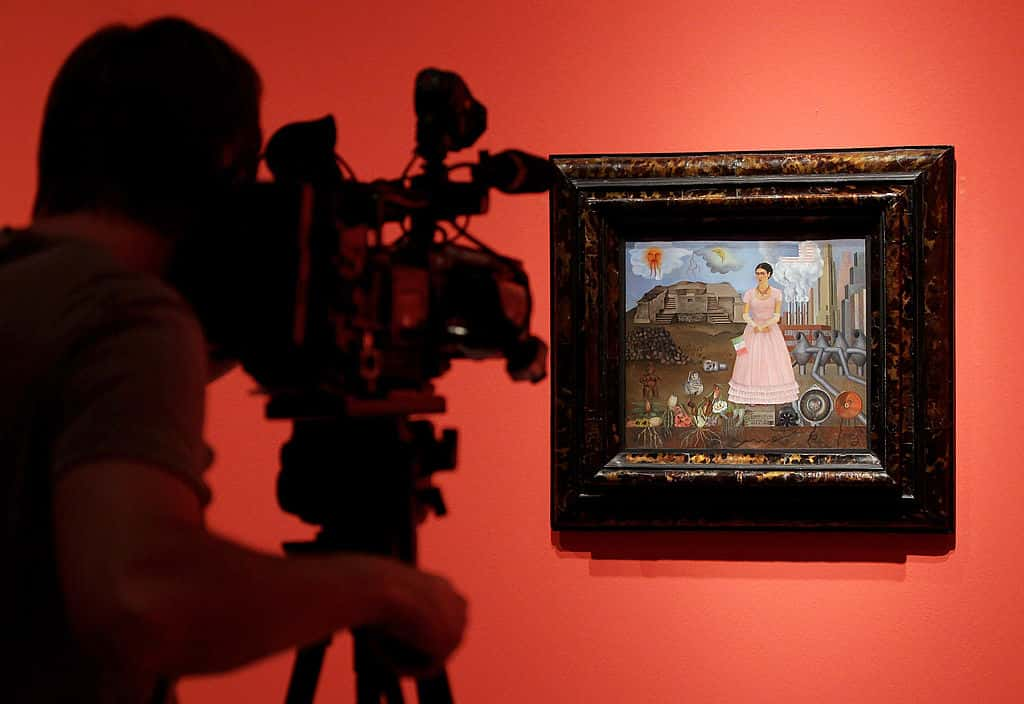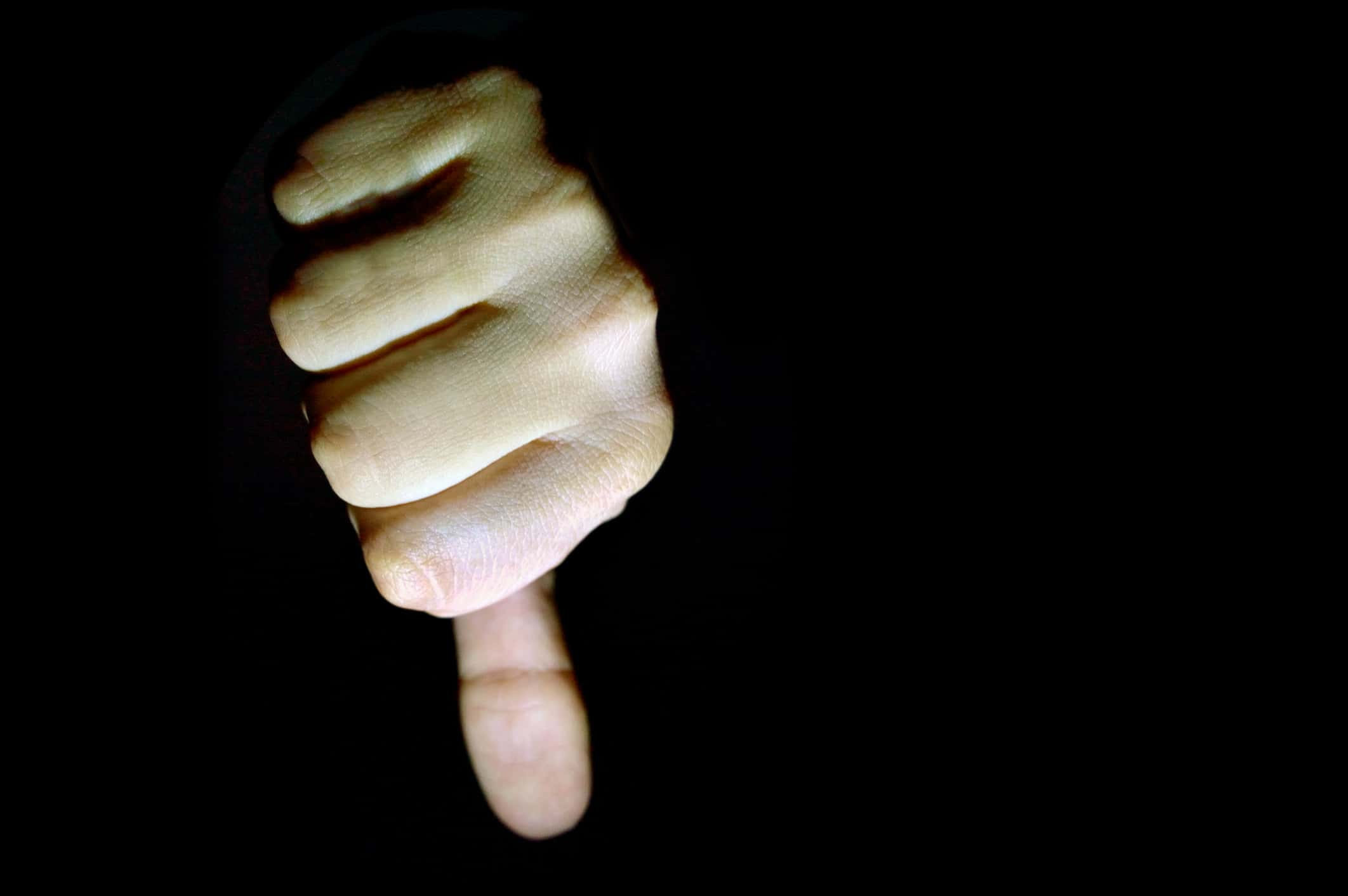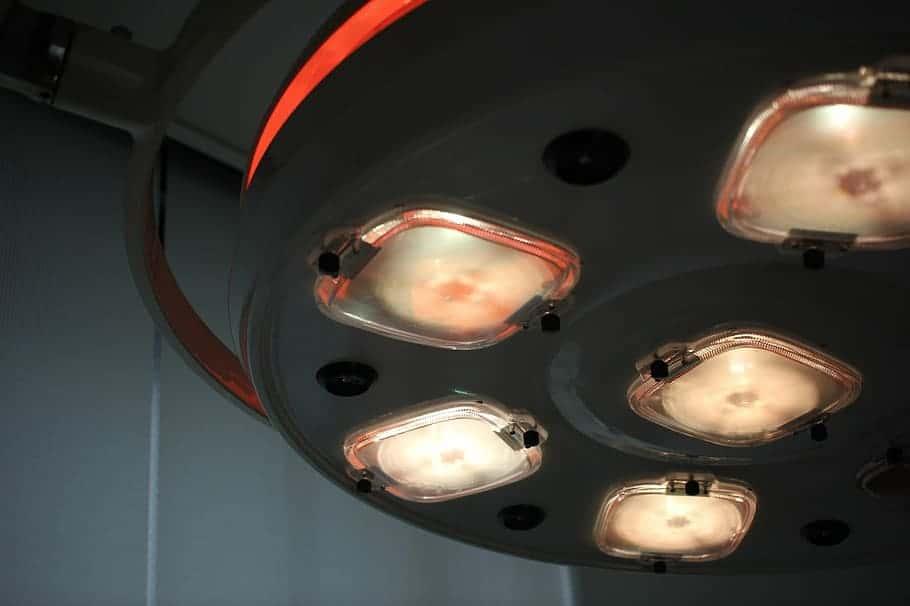There is something so raw and timeless about Frida Kahlo’s paintings that we can probably all identify with. For many Kahlo is an icon of feminism, Mexican identity, living with a disability, and political activism. Although she had some success and recognition in her life, Kahlo was most celebrated years after her passing and she never got to witness her worldwide fame. What follows are painful and beautiful facts about one of the most inspiring and motivated artists in history.
1. Lightning Strikes Twice
Frida Kahlo spent years recovering from a childhood stricken by illness and pain. She was studying to become a doctor in 1925—but one fateful moment changed it all. Kahlo and her boyfriend were on their way home from school one day when their bus ran into a streetcar, killing a number of passengers. Fortunately, Kahlo survived—but the damage was done.

2. Salt in the Wound
Unfortunately, it took Kahlo months to recover from her very serious injuries. She was isolated from her peers as a result. Kahlo displaced three vertebrae and fractured her legs, ribs, and collarbone in the accident. She was also stabbed by an iron handrail that fractured her pelvic bone.
3. Silver Linings
Kahlo’s run-in with the streetcar destroyed the life that she had planned for herself. She had to give up dreams of becoming a doctor and she spent the rest of her life in constant pain. However, as she recovered, she rediscovered art and started doing medical illustrations with an easel that was specially designed to fit over her bed.
4. Rainbow Colored Glasses
Frida Kahlo was actually bi. She was truly a painter ahead of her time in many ways, including her openness about her sexuality. On the list of famous women she had affairs with was Josephine Baker, the vaudeville dancer.
5. No Monkey Business
Many of Frida Kahlo’s paintings used the monkey as a recurring motif. Her monkeys, though were a symbol for protection, not lust, as was typical of Mexican mythology at the time. This could've been because Kahlo actually kept monkeys as pets at the Casa Azul during her final years there—but they weren't her only pets.
Kahlo’s household collected some seriously strange and exotic animals, including an ancient Aztec dog breed, a parrot, and an eagle.
6. Pain and Portraits
Many know that Frida Kahlo suffered from painful health problems throughout her life, but few know just how excruciating it was for her every day. In total, Kahlo went through 30 surgeries for her various ailments. One of the worst surgeries that she went through was the amputation of her foot after she developed gangrene.
She depicted the fragility of her body and her frustrations towards it in a few of her self-portraits.
7. Artist for the Ages
Frida Kahlo followed in the path of many artists before her who only achieved fame after their passing. Her husband Diego Rivera's notoriety eclipsed hers, and even shortly after her passing, she was known to the public as “Rivera’s wife". It wasn’t until the 1970s that her work was rediscovered by political activists and art historians. Nowadays, Frida Kahlo is almost a household name, and she's come to overshadow her husband, Diego Rivera.
In the 1990s Kahlo was frequently used as the face of Chicano, feminist, and LGBTQ movements.
 Wikimedia Commons, Ines Suarez R.
Wikimedia Commons, Ines Suarez R.
8. Surprise!
Frida Kahlo never had children, but she was pregnant more than once. The strong female artist was never sure about having a child of her own. One earlier pregnancy resulted in an abortion, but when she became pregnant again in the early 1930s, she decided to have another—but no one could've predicted what happened next.
9. A Curse and a Blessing
Kahlo underwent a pharmaceutical abortion, but the medication didn't work. When she found out that she was still pregnant, she decided to go through with it—but sadly, tragedy was around the corner. She suffered a miscarriage soon after—but the heartbreak didn't end there.
10. So Far Away
Just three months after Kahlo went through a miscarriage, her mother also passed on. Even worse, Kahlo was away from Mexico at the time, visiting the US with her husband.
11. Breaking Records and Taking Names
In 2016, a Frida Kahlo artwork was put up for auction and sold for over eight million dollars. At that point, that was the highest amount any Latin American artwork had sold for in an auction—but soon after, the record was broken by none other than Diego Rivera, Kahlo's husband.
12. To Each His Own
Much of Kahlo’s art was political in nature. A piece called “My Dress Hangs There” was painted during a period of discontent with American life. Her husband wouldn’t let them go home to Mexico because of the fame he enjoyed in America, so Kahlo painted to protest the superficiality of capitalism and the decay of important human values.
13. What’s in a Name?
The influential artist we now call “Frida Kahlo” was born Magdalena Carmen Frida Kahlo y Calderón. She was born in 1907 in a village just outside Mexico City. Her birthplace is disputed. She says she was born at home in what her family called “La Casa Azul,” or “The Blue House,” but official records say she was born nearby in her grandmother’s home.
14. A Picture’s Worth a Thousand Words
Kahlo’s father Guillermo was a photographer, so perhaps that’s where she got her keen artistic sense from. Guillermo moved to Mexico from Germany due to a battle with epilepsy that prevented him from continuing his studies. Kahlo’s mother Matilde was born in Mexico to a Spanish mother and an indigenous father. She gave birth to four daughters with Guillermo, including Frida.
15. Oh, Mother
Kahlo did not have an especially pleasant upbringing. She grew up with three sisters, which is enough to drive anyone crazy, but there was a dark cloud looming over the family home. Not only were both of her parents were frequently sick, but her mother was also both religious and manipulative, which put tension on her familial relationships.
16. See the Sites
The Blue House in Coyoacán where Kahlo spent most of her life is now open to the public as a museum named after the painter herself. The museum is situated in a beautiful old neighborhood and features many of Kahlo’s personal items and paintings. It’s one of the most popular museums in Mexico City.
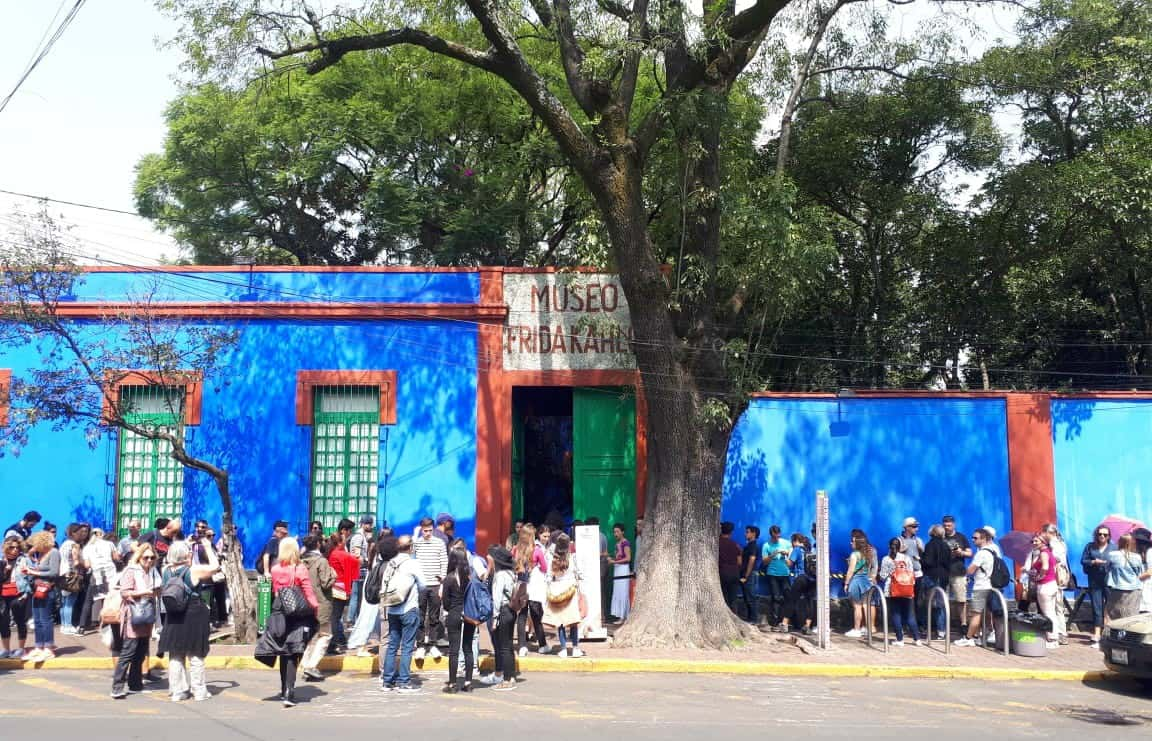 Wikipedia, Jorge Akio Olvera Arao
Wikipedia, Jorge Akio Olvera Arao
17. Important Independent Introvert
When Kahlo was only six years old, she contracted polio, causing her right leg to become shorter and thinner—but the heartbreak didn't end there. Perhaps because of her physical deformity, Kahlo was treated poorly by her classmates and she was kept away from other kids her age for months at a time. Her harrowing childhood made her an introverted individual.
18. You Got a Friend in Me
One positive aspect of Kahlo’s childhood was her relationship with her father. Her father empathized with her medical condition because he was also living with a disability, so he took her under his wing. He encouraged her to participate in sports, even though they were seen as an activity for boys, and let her help him with his photography work.
The most influential aspect of his relationship with her was his total understanding of what she was going through.
19. Glass Half Full
It's a good thing that Kahlo was strong-willed, because what she went through might've been unbearable for anyone else. Kahlo was one of those stubborn few that kept-on-keeping-on no matter what life threw her way. She treated her accident as a new beginning and started painting the world as she saw it. Outfitting the easel at her bed with a mirror in which she could see herself allowed Kahlo to create paintings that questioned existence and identity.
20. Paint What You Know
Kahlo’s early paintings were inspired by European Renaissance artists like Botticelli and avant-garde artistic movements like Cubism. The content of these paintings were the people around Kahlo, like her sisters, her school friends, and most famously, herself.
21. What's My Age Again?
Kahlo had to start her school career a little later than her friends because of her illness. She ended up starting at the same time as her younger sister, but they were homeschooled through grades five and six. Although the rest of her sisters were sent to a convent school, Kahlo’s father had different plans for her.
22. In and Out
Due to his German heritage, Kahlo's father Guillermo put her in a German school. While she was academically inclined, her stubborn nature made her something of a troublemaker. Soon after she was enrolled in the school, she was expelled—and her next school experience was an utter nightmare.
23. Another Brick in the Wall
After Kahlo was expelled from the German school, she entered a vocational teachers' school. She didn't last long there either, but this time, it wasn't because of her disobedience. Kahlo left the school after she was abused by a female teacher there.
24. Write Like a Girl
Before her terrible traffic accident, Kahlo had been accepted to the National Preparatory School for natural sciences. Out of 2,000 students at the school at the time, only about 35 of them were girls. Not letting that stop her, Kahlo was an excellent academic and had her sights set on becoming a doctor.
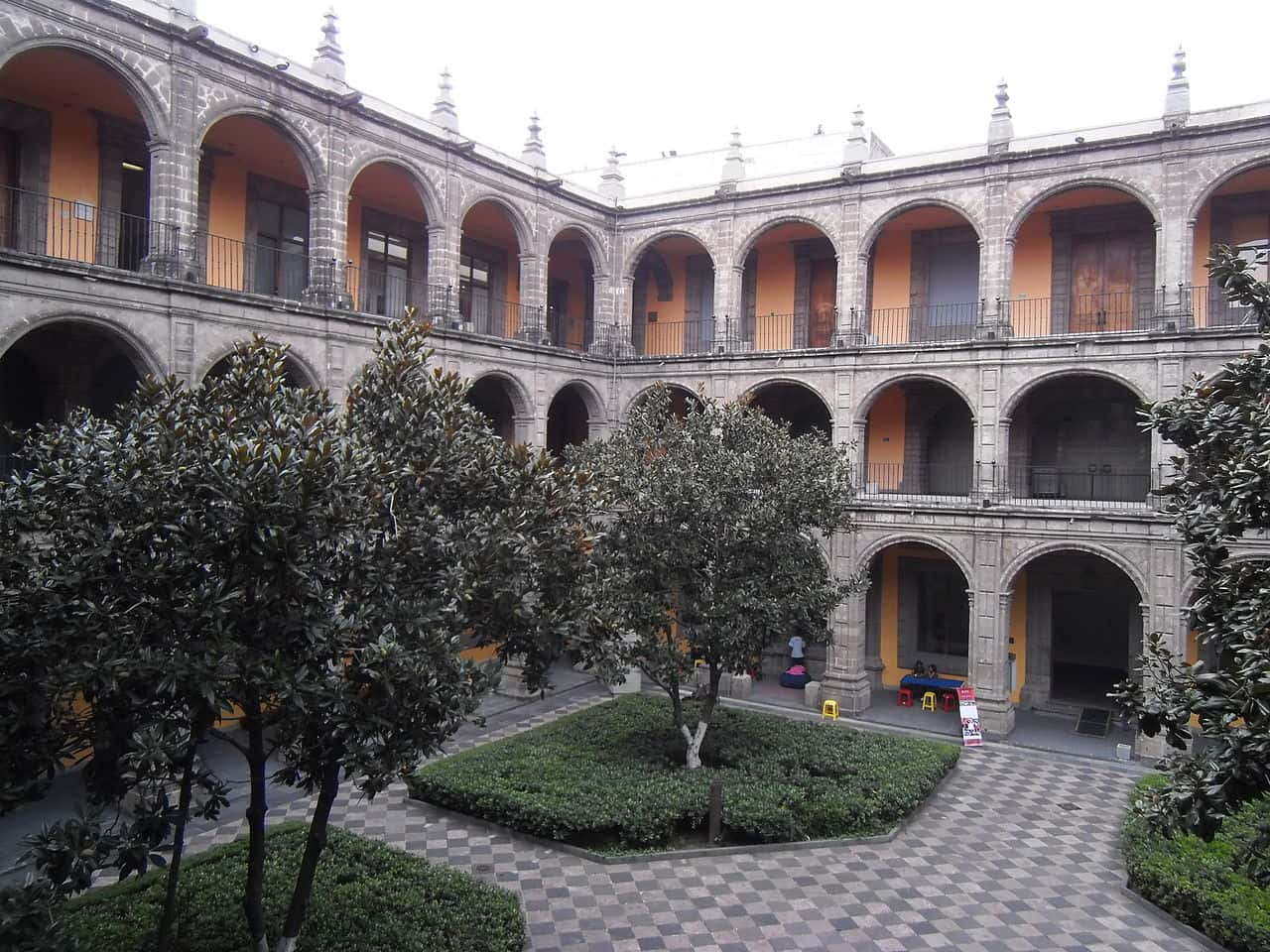 Wikimedia Commons, Patricia Alzuarte Díaz
Wikimedia Commons, Patricia Alzuarte Díaz
25. Anything You Can Do We Can Do Better
During her time in school, Frida Kahlo was involved in a small political group with nine of her classmates called the Cachuchas. Her fellow group members became the subjects of one of her paintings and her time in school generally got her more interested in political activism and social justice in Mexican culture.
The school itself took pride in a new sense of Mexican identity called indigenismo that centered on indigenous heritage and rejected any sense that Europe was better than Mexico.
26. I’m 29… Again
Kahlo was hiding a dark secret from her friends in the Cachuchas. She had entered school late because of her early experience with polio, and she wanted her classmates to accept her so she lied and said she was three years younger than she really was. Even after she finished school she maintained the lie.
However, there was another side to it--she wanted to be seen as a "daughter of the revolution," so she said she was born in 1910, the year the Mexican Revolution began.
 Wikimedia Commons, Jeff Reuben
Wikimedia Commons, Jeff Reuben
27. Prince Not-Always Charming
Picture it: a celebrated muralist who isn’t like other men. He’s big and strong, but he doesn’t buy into traditional Mexican ideas about masculinity, where women are dominated by men. Most importantly, he’s filthy rich and can pay for all those expensive medical bills you’ve been racking up. Who wouldn’t want to marry into that?
Diego Rivera was Kahlo’s one husband in life, but he had a darker side as well.
28. Dark Secrets Revealed
Rivera was a self-confessed womanizer and already had two common-law wives at the time of their marriage. Kahlo’s mother rejected the marriage and it ended up being quite turbulent at times.
29. On the Road Again
Ignoring her mother's wishes, Kahlo wed Rivera. Rivera was already a famous artist at the time, and the Mexican press covered the wedding. After their marriage, Kahlo spent many years traveling between the United States and Mexico with her husband. In this time her art was developed and inspired by Mexican folk culture.
30. Two Can Play This Game
While Rivera's frequent infidelity broke Kahlo's heart, he wasn't the only one keeping secrets. While living in San Francisco between 1930 and 1931, Kahlo had an affair with photographer Nickolas Muray, and it wasn't just a one-night stand. Kahlo and Muray's relationship lasted for years, until he married someone else. She had many other ongoing affairs afterward.
31. Strength of Will
While Kahlo's health problems may have left her frail and petite, her personality was larger than life. She bragged that she was a better artist than her husband. She once said: "Of course he does well for a little boy, but it is I who am the big artist".
32. You Win Some You Lose Some
During her time in the US, Kahlo was secretly miserable. She didn’t like socializing with capitalists, she didn’t like the class divide and watching the rich party while the poor slept on the street, and she didn’t like the colonialist nature of American society. Kahlo didn’t like most of the people there, who she thought were boring. The list goes on…
33. On Your Own
When Kahlo and Rivera returned to Mexico, things were tumultuous behind closed doors. After one particularly egregious affair on Rivera's part (more on that later), Kahlo left him and lived in central Mexico City by herself. During this time, she began an affair with the famous American artist Isamo Noguchi—but she didn't stop there.
34. That’s Surreal
The famous Surrealist Andre Breton coordinated Kahlo’s first-ever solo art show. The event took place in 1938 in New York to positive feedback. It went so well that the following year she completed another solo art exhibition in France. Sadly, it wasn’t received as well.
35. You Go Girl!
Despite the fact that her exhibition in France didn’t go so well, the prestigious Louvre purchased one of her paintings titled “The Frame". Kahlo was the first Mexican artist ever to be featured in their gallery.
36. Fashion Requires Sacrifice
When Kahlo went to France to show her art there was an unforeseen benefit: artists who lived or showed in Paris like the famed Pablo Picasso greeted her with fondness. She also caught the attention of the fashion designer Elsa Schiaparelli, who created a dress inspired by Kahlo which got her into the pages of Vogue.
37. Friends, Neighbors, and More
In between her trips abroad for her art shows, Kahlo and Rivera petitioned Mexico to offer asylum to former Soviet leader Leon Trotsky and his wife. At first, they stayed at the Casa Azul before moving into another home in Coyoacan. During this time, Kahlo and Trotsky had an affair.
38. No Walls High Enough
After multiple attempts on his life, Trotsky's residence became something of a walled fortress, but one determined assassin made their way through and took his life in 1940. Kahlo and her sister Cristina were actually detained and held under suspicion of involvement in the leader's assassination, as they actually knew the culprit. They were eventually released without charges.
39. If at First You Don't Succeed, Try Again
Rivera divorced Kahlo in 1939, and she moved on quickly, beginning a relationship with an art dealer while visiting San Francisco—where Rivera conveniently was. Eventually, Rivera and Kahlo reunited and actually were remarried in 1940. While their first marriage had been turbulent, this time it was much more smooth—despite the fact that neither stopped having affairs.
40. Even Those Who Can Do Teach
Kahlo did not stop at being a popular artist, she also worked as a teacher of art in the 1940s at “La Esmeralda” or Mexico’s National School of Painting, Sculpture, and Printmaking. She was also ahead of her time in the world of pedagogy. Her classroom was a non-hierarchical environment with an informal atmosphere.
The students learned to appreciate Mexican culture and traditional art and find their subjects simply out on the street.
41. A Last Supper of Sorts
Kahlo’s teaching career and her presence as a solo artist in Mexico were brief, due to her demise at the age of 47. She had one solo exhibition in Mexico in 1953, the year before her passing.
 Wikimedia Commons, SantinoDeMarquishi
Wikimedia Commons, SantinoDeMarquishi
42. If You’ve Got it, Flaunt it
Kahlo did not just ooze Mexican identity and culture out of her artwork, she also performed and lived it every day for the world to see. She decorated herself in traditional indigenous Mexican clothing including long, colorful skirts and lots of jewelry. Kahlo was proud of her mestiza ancestry.
43. Small, Symbolic, and Silent
The most famous Frida Kahlo self-portrait is entitled “Self-Portrait with Thorn Necklace and Hummingbird". The content of the picture is exactly that, Frida Kahlo with butterflies in her hair, a monkey and a cat on her shoulder, and a thorn necklace with a hummingbird. The painting is quite small but incorporates many of Kahlo’s usual symbolisms and interests—and one part directly references the pain and misery she felt most of the time.
In the portrait, her neck is slightly bleeding and she patiently endures the pain.
44. Youch, That Hurts
Kahlo was increasingly isolated as her existing illnesses got worse and new ones piled up in the last years of her life. At different times, she had to wear 28 different corsets made of everything from plaster to leather to steel to help correct her spinal condition. She was also treated for syphilis and had a worsening infection on her hand—but her pain wasn't only physical.
45. Daddy's Girl
Kahlo had always been remarkably close to her father, Guillermo Kahlo, but sadly, he passed on in April 1941, when her health problems were absolutely excruciating. After losing him, Frida fell into a deep depression.
46. A New Hope
In 1945, when her health problems had made everyday life utterly unbearable, Kahlo received exciting news about an operation that could potentially change her life. In June of that year, she traveled to New York for a complicated surgery that would straighten her spine with a bone graft and steel support.
Sadly, the surgery was not successful. Kahlo remained unable to sit or stand continuously.
47. To Live and to Die
It's been reported that Kahlo was born and passed on in the same building. The Casa Azul building was donated by Rivera to be used as The Frida Kahlo Museum and is still home to the urn that contains her ashes.
48. Like the Back of Her Hand
Of her famous paintings, probably the most famous of all are Kahlo’s self-portraits. In total, she painted herself 55 (official) times and they make up a third of her total artworks. Considering her isolation, it's unsurprising.
49. That’s Not My Name
Kahlo was often called a surrealist. She didn’t take kindly to this label, though. Her paintings were not beyond reality, in fact, they were her reality, exactly as she saw it.
50. Sweet Ride
In 1953, Kahlo's first solo exhibition in Mexico opened. She was in incredibly poor health at the time, but went to extreme lengths to make an appearance. For the opening, Kahlo rode up in style in the back of an ambulance. The doctors advised against her attendance, but Kahlo was always a bit of a rebel and she was excited to see her first exhibition in her home country.
51. The Last Straw
While Kahlo and Rivera's second marriage was much less tempestuous, it wasn't without its problems. When Kahlo's health problems were at their worst, Rivera had an affair. It nearly sent her over the edge. She tried to take her own life, but was unsuccessful.
52. The End Approaches
After that episode, Kahlo's health steadily worsened. She seemed aware that death was approaching. Kahlo drew her last breath on July 13, 1954, in her home. While the cause of demise was listed as pulmonary embolism, no autopsy was performed. Some suspect that she took her own life due to the excruciating pain that she was constantly in.
She was a huge celebrity in Mexico. Hundreds gathered in Mexico City to mourn the loss of Frida Kahlo.
53. Keep It in the Family
The bond between Frida and Diego was one marked by many infidelities on both sides of the marriage—but in early 1935, he took it too far. Rivera actually had an affair with Kahlo’s younger sister. Heartbroken and furious, Kahlo left Rivera’s household and considered leaving him entirely, but their story didn't end there.
54. Ol' (Un)Faitful
Despite her sense of betrayal, Kahlo forgave both Rivera and her sister and came back to him. But even that disturbing incident didn't stop either Kahlo or Rivera from continuing to cheat on each other—until their marriage reached an unbearable breaking point.
55. Enough Is Enough
In 1939, Rivera finally asked Kahlo for a divorce. The divorce was finalized in November. Their relationship continued on and off until her passing, and his name frequently appeared in her diaries towards the end of her life. Rivera claimed that the day Kahlo died was the worst day of his life, and he passed on three years after her.






